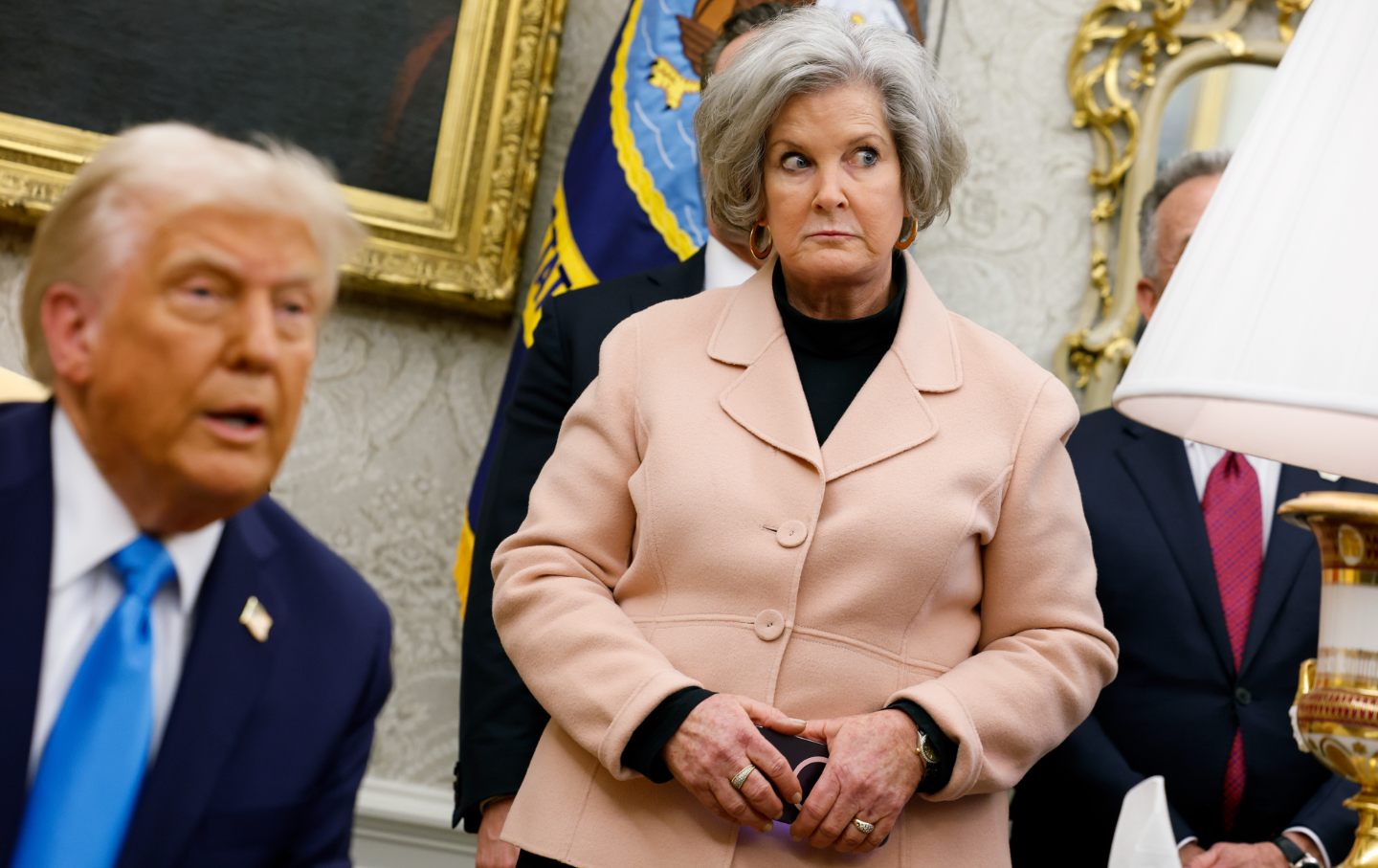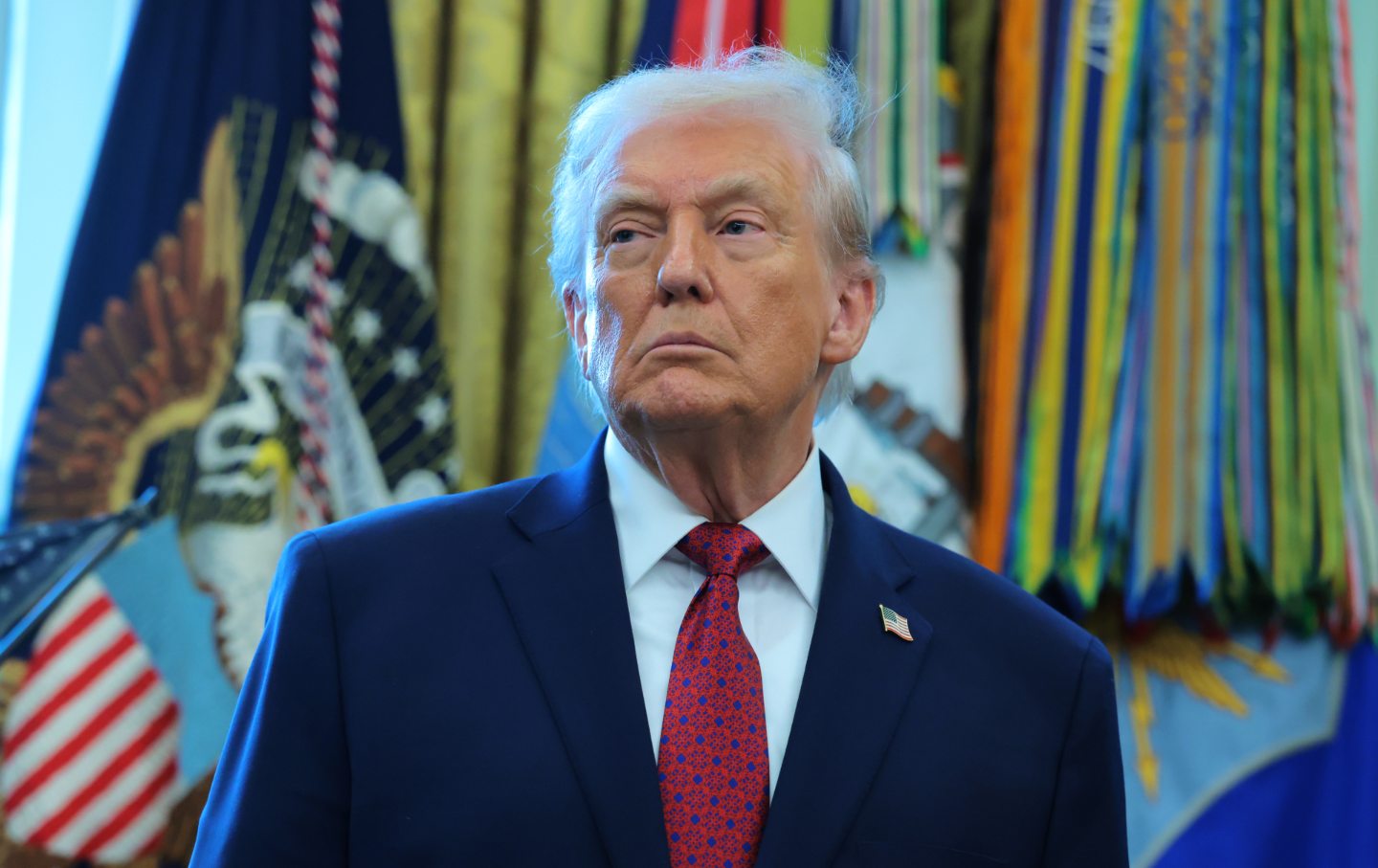The Red Wave Didn’t Hit Statehouses in This Election
State-level Democrats largely held their ground, even scoring key victories in battleground states—and under Trump, that’s going to matter.

US Representative-elect Sarah McBride, a Democrat from Delaware and the first transgender person elected to Congress, attends the member-elect room lottery drawing on Capitol Hill on November 21, 2024.
(Samuel Corum / AFP via Getty Images)
It’s not breaking news to say that 2024 was challenging for Democrats. Republicans swept the White House and both chambers of Congress, creating a GOP federal trifecta that will give Donald Trump and his allies free rein in Washington for at least the next two years.
What’s missing from national headlines is that Republicans’ widespread gains fizzled just a little farther down the ballot, in the states. Given what we saw at the top of the ticket, conventional wisdom would say there should have been a red wave in our statehouses. But, significantly, there was not. In fact, state legislative Democrats largely held their ground, even scoring key victories in battleground states like Pennsylvania, North Carolina, and Wisconsin, while fighting to a draw in others like Minnesota. We won critical races on tight margins in battlegrounds that went red for the presidential and US Senate and congressional races—and we did it with fewer resources at our disposal. The presidential campaign spent our entire cycle’s budget every single week.
Here’s why this matters as we collectively brace for what’s to come: Democrats’s state power is shaping up to be the strongest counterweight to the Trump administration. When Donald Trump was first elected in 2016, there were just 29 Democratic legislative majorities in the states, and only six states had Democratic governing trifectas. That meant there were only so many opportunities for the states to quickly or effectively counter the damaging effects of MAGA federal policy.
This time around, Democrats are in a much stronger position. Thanks to a decade of making investments and gains—including our 2024 wins—Democrats will hold nearly 40 majorities in our statehouses and are ready to combat the worst of the Trump presidency. We’ve also nearly tripled our number of governing trifectas to 15 states, including big blue powerhouses like New York, California, and Illinois with large populations and booming economies. Case in point: California alone is the fifth-largest economy in the world.
That means state Democrats will have serious sway under a second Trump administration. If Trump goes full steam ahead on the many extreme and dangerous promises made during the campaign—including Project 2025—Democrats in state legislatures are ready to pump the brakes.
If Republicans try to eradicate the Department of Education, Democrats are ready in the states to fight back and invest in public schools. If Republicans dismantle the Paris Climate Accords and eliminate NOAA, state Democrats will lead the charge on climate solutions. If Republicans pass sweeping attacks on reproductive care, state Democrats stand ready to fight for women and those who love them.
We saw Democratic state legislatures serve as a critical counterweight against the first Trump administration, and they’re poised to play this role again on an even bigger scale. A hundred and sixty million Americans—or nearly half the country—live in a state with a Democratic legislative majority, and that will have serious policy implications.
State Democrats are ready to be the answer to the question of where to channel energy and attention after 2024 losses—and there are opportunities just a few weeks away through upcoming state legislative special elections. There are no off-years at this level of the ballot and we must be ready to roll up our sleeves to seize opportunities.
State legislatures will not only protect our future in the short term, but are also critical in the long term for charting a new way forward in this country. Redistricting is right around the corner, which will affect how state legislative and Congressional maps are drawn—determining if we will have competitive elections for the next decade. The importance of those maps can not be overstated. If extremists are allowed to draw the maps, they will be able to override the will of the majority and force their agenda on voters. The damage would be generational. The work to ensure fair and democratic redistricting in 2030 begins now.
The road ahead under another Trump administration is daunting and will be challenging, but there is a path through the chaos—and it starts with state legislatures. The strength of our firewall in our state legislatures has never been more important—all eyes should be on the states to build back our power and safeguard our future.
Disobey authoritarians, support The Nation
Over the past year you’ve read Nation writers like Elie Mystal, Kaveh Akbar, John Nichols, Joan Walsh, Bryce Covert, Dave Zirin, Jeet Heer, Michael T. Klare, Katha Pollitt, Amy Littlefield, Gregg Gonsalves, and Sasha Abramsky take on the Trump family’s corruption, set the record straight about Robert F. Kennedy Jr.’s catastrophic Make America Healthy Again movement, survey the fallout and human cost of the DOGE wrecking ball, anticipate the Supreme Court’s dangerous antidemocratic rulings, and amplify successful tactics of resistance on the streets and in Congress.
We publish these stories because when members of our communities are being abducted, household debt is climbing, and AI data centers are causing water and electricity shortages, we have a duty as journalists to do all we can to inform the public.
In 2026, our aim is to do more than ever before—but we need your support to make that happen.
Through December 31, a generous donor will match all donations up to $75,000. That means that your contribution will be doubled, dollar for dollar. If we hit the full match, we’ll be starting 2026 with $150,000 to invest in the stories that impact real people’s lives—the kinds of stories that billionaire-owned, corporate-backed outlets aren’t covering.
With your support, our team will publish major stories that the president and his allies won’t want you to read. We’ll cover the emerging military-tech industrial complex and matters of war, peace, and surveillance, as well as the affordability crisis, hunger, housing, healthcare, the environment, attacks on reproductive rights, and much more. At the same time, we’ll imagine alternatives to Trumpian rule and uplift efforts to create a better world, here and now.
While your gift has twice the impact, I’m asking you to support The Nation with a donation today. You’ll empower the journalists, editors, and fact-checkers best equipped to hold this authoritarian administration to account.
I hope you won’t miss this moment—donate to The Nation today.
Onward,
Katrina vanden Heuvel
Editor and publisher, The Nation








